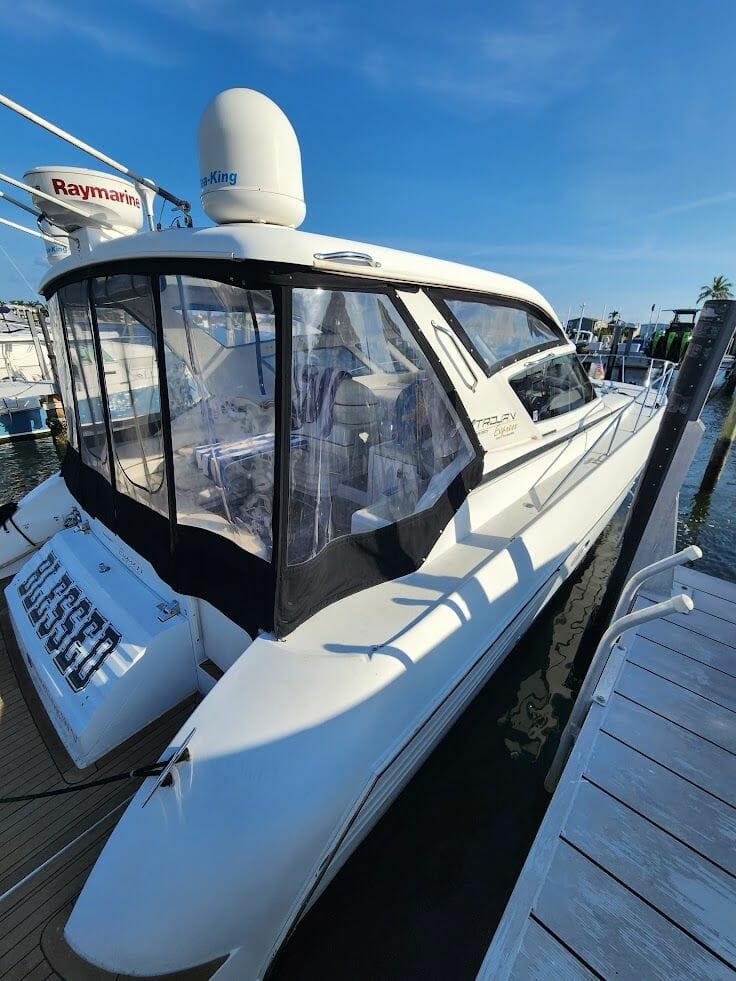Radar, an acronym for Radio Detection and Ranging, is an indispensable tool when it comes to marine navigation and safety. As one of the most effective ways to detect other vessels and potential hazards, marine radar systems have become a vital component in the efficient operation of ships and boats of all sizes.
In this article, we shall explore the basics of marine radar systems, how they work, their components, different types of radar, and their applications in the marine industry.
How Marine Radar Works
Marine radar works by transmitting a series of high-frequency radio waves, which bounce off objects in their path and return to the radar antenna. The time it takes for the waves to travel to the object and back determines the distance to the object, while the direction of the antenna at the time of the echo determines the object’s bearing. This information is then displayed on a radar screen, allowing mariners to identify and monitor the movement of other vessels and potential hazards in their vicinity.
Components of a Marine Radar System
A marine radar system comprises several key components that work together to provide an accurate representation of the surrounding environment. These include:
Antenna
The antenna is the most visible part of a radar system and is mounted on a mast or an arch on the vessel. It transmits and receives the radio waves used to detect objects and can rotate on a horizontal axis, providing a continuous 360-degree view of the surroundings. The size and type of antenna vary depending on the radar system’s range and intended use.
Transmitter
The transmitter is responsible for generating the high-frequency radio waves used by the radar. It converts the radar’s input power into radio frequency energy, which is then emitted by the antenna.
Receiver
The receiver detects the radio waves that are reflected back to the antenna after bouncing off objects. These echoes are then processed and amplified to enable the radar display to present the information in a meaningful way.
Display
The display is the user interface where mariners can view the radar data and analyze the surrounding environment. Traditional radar displays use a circular screen with a rotating sweep that “paints” the radar contacts as it receives signals from the antenna. Modern radar systems utilize high-resolution color screens that provide a more detailed and user-friendly representation of the radar data.
Types of Marine Radar
Marine radar systems are generally categorized into two main types:
Pulse Radar
Pulse radar is the most common type of marine radar and operates by transmitting a series of short duration, high-energy pulses. The time delay between transmitting and receiving the pulse is used to calculate the distance to the detected object. Pulse radar is suitable for both long-range detection and target resolution.
Frequency Modulated Continuous Wave (FMCW) Radar
FMCW radar, also known as “broadband radar” or “solid-state radar,” transmits a continuous wave with a steadily changing frequency. The difference in frequency between the transmitted and received signals corresponds to the distance of the detected object. FMCW radar is known for its low power consumption, fast target update rate, and excellent short-range performance. However, it may not be as effective as pulse radar in long-range detection due to its lower output power.
Applications of Marine Radar
Marine radar systems are essential in various maritime operations and for overall navigational safety. Some of the primary applications of marine radar include:
Collision Avoidance
One of the most crucial functions of marine radar is to facilitate collision avoidance by providing accurate information about the position, speed, and bearing of surrounding vessels. This information is vital in densely populated shipping areas and in low-visibility conditions.
Navigation
Marine radar is used to detect navigational aids such as buoys, lighthouses, and coastline features. Radar can also identify potential hazards such as rocks, reefs, and submerged obstacles.
Weather Detection
Advanced radar systems offer weather detection capabilities, providing mariners with vital information about approaching storms, squalls, and other weather phenomena, allowing them to make informed decisions to ensure the safety of the vessel.
Search and Rescue
In a search and rescue operation, marine radar can detect lifeboats, persons in the water, and other small objects, aiding the rescue team in locating and retrieving those in distress.
Marine radar is an essential tool for mariners, providing vital information about the vessel’s surroundings and ensuring the safety and efficiency of maritime operations. Understanding the basics of marine radar systems and their various applications is crucial for anyone operating in the marine industry. These advances in radar technology have significantly improved marine navigation and safety, allowing mariners to navigate with confidence and providing a clearer view of the challenges they may face on the open seas.


